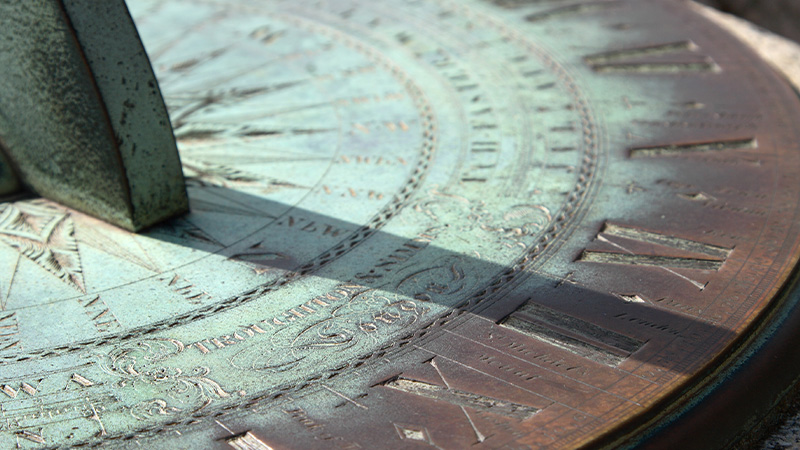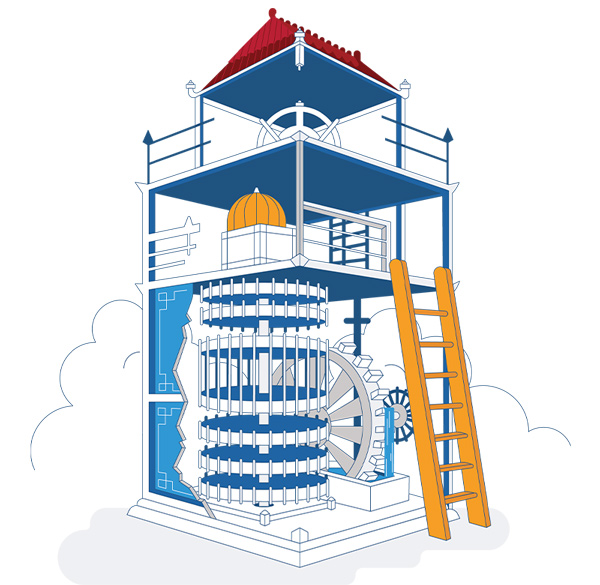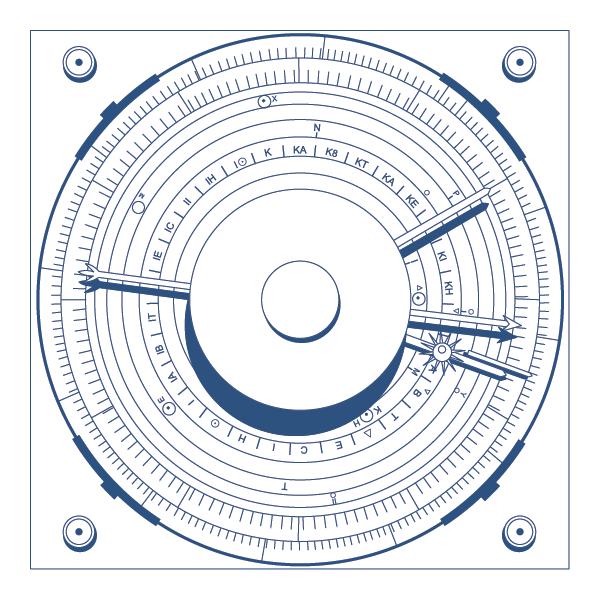The Story of Timekeeping: Measuring Time in Ancient Civilizations (Part 1 of 3)

From our earliest ancestors, humans have been captivated by the fundamental question: What is time? They looked to the skies, searching for patterns in the stars and the sun's journey, seeking to understand and harness time's elusive nature. Over millennia, as we settled in place and civilization took hold, our understanding of time grew, and so did its significance. We developed methods for tracking time and used this understanding to make the most of it, marking the change of seasons, the optimal times to plant the most bountiful crops and to hold religious festivals. Over the centuries, measuring time has become highly developed, enabling greater innovation and human progress.
Welcome to our three-part series on the history of timekeeping, where you’ll journey from the beginnings of timekeeping to timing technology that is enabling next-generation innovations previously not believed possible. This is part one of our series, where we explore how ancient civilizations measured and celebrated time, laying the foundation for the sophisticated and complex timekeeping technologies we rely on today.
Celestial Beginnings in Early Timekeeping
Our ancestors relied on celestial bodies to keep time. Mapping the sun's path across the sky, the phases of the moon, and the movement of constellations served as the first calendars and clocks. From the primitive yet ingenious shadow sticks to the more complex sundials and obelisks, these early devices were not just tools but symbols of a growing understanding of the universe and our place within it.
Egyptian Mastery: Solar Timekeeping
In the sands of ancient Egypt, timekeeping was not just a scientific endeavor but a sacred art. The Egyptians, with their shadow clocks and sundials, were among the first to slice the day into measurable parts. These devices did more than just mark hours; they were integral to the Egyptian way of life, influencing everything from agriculture to religious ceremonies, reflecting a society deeply intertwined with the rhythms of time.
Babylonian and Mesopotamian Innovations: Sexagesimal Counting
Meanwhile, Mesopotamians and Babylonians took a different approach. Their lunar calendars, complex and intertwined with astrology, laid the groundwork for many modern timekeeping concepts. This civilization's contributions went beyond mere measurement, influencing subsequent societies' understanding of time and its passage. This influence stretches across time to the current day. The 60-second minute and 60-minute hour is a legacy inherited from the Babylonians, who used a sexagesimal counting system to divide the time in a day.
Ancient Chinese Timekeeping: The Pinnacle of Water Clock Engineering
Far East, in ancient China, the pursuit of precision in timekeeping took a different form. The Chinese developed intricate water clocks, culminating in the engineering marvel of Su Song's astronomical clock tower. Once completed and for centuries after, the Su Song water clock stood as the most accurate clock in the world. These devices were not just timekeepers but also represented the harmony between technology, governance and the cosmos, playing a pivotal role in daily life and imperial rituals.

The earliest sophisticated timekeepers were water clocks, also known as clepsydra. The name means “water thief” in Ancient Greek, derived from the eponymous Athenian spring. The apotheosis of this design, the Su Song Water Clock in China ca. 1100 A.D., had an estimated possible accuracy of 1 second/day.
Greco-Roman Legacy: From Public Sundials to a Portable Cosmos
In the classical world of Greece and Rome, timekeeping spread from the temples and royal courts into public life. Wealthy citizens would carry sophisticated mechanisms, like the Antikythera device discovered in 1901, to represent a portable cosmos. These remarkable devices would track not just the time but the sun and the moon and mimic the motion of the solar system.

A rendering of the Antikythera Mechanism indicating the position of the Sun, the Moon and planets, 100 B.C. This object was recovered in a shipwreck in 1901 by sponge divers off the Greek island of Antikythera. It remained a mystery until Derek de Solla Price studied the device in the 1970s. He realized it was a mechanical representation of the solar, lunar and planetary movements. Further research, including X-ray tomography, revealed the remains of its internal mechanism.
Mesoamerican Calendars: Precision in Mayan and Aztec Timekeeping
Across the ocean, the Mayans and Aztecs developed calendars of astonishing accuracy, deeply intertwined with their cosmology and agricultural cycles. Their timekeeping systems were complex and sophisticated, demonstrating a profound understanding of astronomical cycles and their impact on the terrestrial world.
How Ancient Astronomers Mapped the Skies
Astronomy played a crucial role in all these civilizations. Observations of celestial events were not just for charting the heavens but were intrinsically linked to timekeeping. These early astronomers realized that the predictable patterns of celestial bodies could be harnessed to mark time, a discovery that remains at the heart of timekeeping today.
SiTime, the precision timing company, is concerned with the history of timekeeping because it is the origin story for understanding and advancing precision timing solutions. Timekeeping has evolved from rudimentary methods like sundials and mechanical clocks to MEMS-based oscillators, each innovation in the continuum of timekeeping addressing the growing need for accuracy, stability and reliability.
By studying the historical breakthroughs in timekeeping, we can better appreciate the demands of modern applications, from AI datacenters to autonomous driving, and design cutting-edge timing solutions that underpin the electronics innovations of today and into the future. This historical perspective underscores the importance of timing in enabling technological advancement and societal growth. We hope you will join us for part 2 in our exploration on the history of timekeeping where we take a look at the evolution of mechanical clocks.
